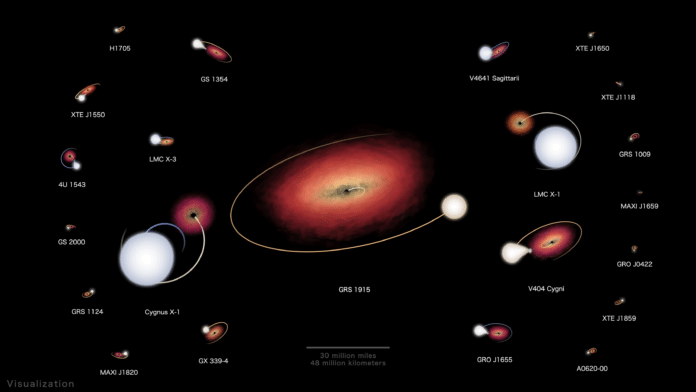In 2015, astronomers first detected merging black holes through the space-time ripples. The space-time ripples called gravitational waves are the main way to find these ebony enigmas was to search for them in binary systems where they interacted with companion stars.
Recently NASA shared a stunning visualization of 22 black hole systems in our Milky Way galaxy and its nearest neighbor, the Large Magellanic Cloud. All the black holes are shown at the same scale, with their orbits sped up by about 22,000 times. The view of each system reflects how we see it from Earth.
Most of the systems have accretion disk around themselves, whereas, in some, like the famous system called Cygnus X-1, the star produces a hefty outflow. The black hole’s gravity partly sweeps up this outflow to form the disk.
The gas-containing accretion disk heats up as it slowly spirals inward. It hence glows in visible, ultraviolet, and finally, X-ray light. The accretion disks use a different color scheme because they sport even higher temperatures than the stars.
The largest disk belongs to a binary called GRS 1915, which may extend more than 50 million miles (80 million kilometers), greater than Mercury’s distance from the Sun.
Credits: NASA’s Goddard Space Flight Center and Scientific Visualization Studio
NASA mentioned in a blog, “The star colors range from blue-white to reddish, representing temperatures from 5 times hotter to 45% cooler than our Sun. Because the accretion disks reach even higher temperatures, they use a different color scheme.”
“While the black holes are shown on a scale reflecting their masses, all are depicted much larger than in reality. Cygnus X-1’s black hole weighs about 21 times more than the Sun, but its surface – called its event horizon – spans only about 77 miles (124 kilometers). The oversized spheres also cover up visible distortions that the black holes’ gravitational effects would produce.”
